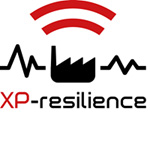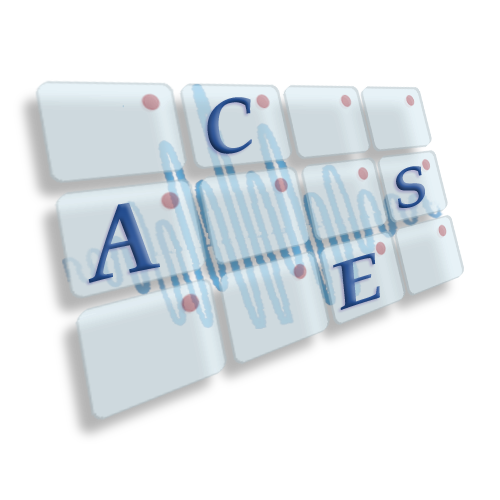The laboratory has been actively involved in research during the past 20 years, enhancing its infrastructure and producing a large volume of publications.
Ongoing Projects

ERIES
Engineering Research Infrastructures for European Synergies
ERIES responds to the call INFRA-2021-SERV-01-07: Research infrastructure services advancing frontier knowledge with the overall objective of providing transnational access (TA) to advanced research infrastructures in the fields of structural, seismic, wind and geotechnical engineering. This project, together with the research infrastructure team assembled, provides access to leading experimental facilities that permit users to advance frontier knowledge and conduct curiosity-driven research towards: the reduction of losses and disruption due to these hazards; the management of their associated risk; and the development of innovative solutions to address them that will contribute to a greener and more sustainable society.
Completed Projects
ASAP
Advanced Hybrid Simulation Application Platform
Duration: 2018-2019
Funding: EU & Ministry of Education (ΕΣΠΑ, ΕΔΒΜ34, 2018)
The project aims to provide the cognitive background for expanding the Hybrid Simulation method to problems of many simultaneous accidental actions and to propose and implement solutions for improving the reliability, speed, safety and quality of hybrid simulations, so that it can be applied to a variety of problems for which it seems to be appropriate. In the framework of the project: (i) New controllers for the laboratory’s Servo-hydraulic actuators will be developed, based on industry standards and high speed communication via local digital channel, (ii) Actuators’ control software will be transferred to real-time software, the peripheral software will be upgraded for compatibility, (iii) the use of multi-processors and open source software for the numerical substructures will be explored, and (iv) tests will be conducted for the verification of the system.

SERA
Seismology and Earthquake Engineering Research Infrastructure Alliance for Europe
Duration: 2017-2020
Funding: EU, H2020, INFRAIA-01-2016-2017 ‘Integrating Activities for Advanced Communities’
The Seismology Earthquake Engineering Research Infrastructure Alliance for Europe (SERA) aims to reduce the risk posed by natural and anthropogenic earthquakes based on innovative research and development projects. SERA will significantly improve the access to data, services and research infrastructures for scientists and other professionals.

EXCHANGE-RISK
Experimental-computational hybrid assessment of natural gas pipelines exposed to seismic risk
Duration: 2016-2020
Funding: EU Marie Curie Research and Innovation Staff Exchange (RISE) 2016
EXCHANGE-Risk is a H2020 research and mobility project lead by the University of Bristol with the aim to: Promote transfer of know how between the academic and industrial sector in Europe, United States and Canada on Seismic risk of natural gas pipelines Innovative methods for pre- and post-earthquake pipeline inspection, system monitoring and network resilience
Intercontinental, multiple-support, hybrid experimentation utilizing experimental and computational facilities among the project partners.

XP-RESILIENCE
Extreme loading analysis of petrochemical plants
and design of metamaterial-based shields for enhanced resilience
Duration: 2016-2020
Funding: EU, H2020-MSCA- ITN-2016, Project Reference: 721816
The objective of XP-RESILIENCE is to offer innovative research training ground as well as attractive career development and knowledge exchange opportunities for Early Stage Researchers (ESRs) through cross-border and cross-sector mobility for future growth in Europe.
XP-RESILIENCE is an inter/multi-disciplinary and intersectoral programme as it includes seven academic partners, one Institute of Applied Science and seven private companies from ten different European countries.
XP-RESILIENCE intends to establish a network of individual research projects working towards Advanced Modelling and Protection –via metamaterial-based isolators/layouts- of Complex Engineering Systems for Disaster Reduction and Resilient Communities.
PRESCIENT
Paradigm for Resilient Concrete Infrastructures to Extreme Natural and Man-made Threats
Duration: 2013-2015
Funding: EU & Ministry of Education
The project’s goal is to develop a first-ever holistic approach for resilience to a portfolio of extreme hazards (earthquake, fire and fast dynamic loading). Its scope is limited to concrete structures, but addresses design of new and retrofitting of existing ones for robustness across the threats, as well as efficient assessment and rehabilitation if a threat occurs. Conceptual, analytical and numerical work will be supplemented with extensive (fire, impact, pseudodynamic, etc.) testing of full- or large-scale components or small structures, as appropriate.

EXCHANGE-SSI
Experimental and Computational Hybrid Assessment Network for Ground-motion Excited SSI systems
Duration: 2011-2014
Funding: EU
The main objective of the EXCHANGE SSI project is to establish the framework for an extended and continuous research staff exchange between E.U. institutions and the Mid-America Earthquake Centre Headquartered at the University of Illinois and other advanced US centres, in order to promote the transfer of knowhow with respect to the application of distributed hybrid multi-platform experimentation for the study of complex soil-structure interaction effects in seismic design and assessment of bridges.
HERAKLEITOS
Duration: 2011-2013
Funding: Ministry of Education
The project focuses at the development of new techniques and materials for retrofitting seismically deficient reinforced concrete buildings through strengthening of masonry infills.

SERIES
Seismic Engineering Research Infrastructures for European Synergies
Duration: 2010-2013
Funding: EU
SERIES is working to bring together Europe’s disparate seismic engineering research facilities including eight reaction wall pseudodynamic facilities, 10 shake table labs, bearing and isolator test centres, two major centrifuge facilities and an instrumented site for wave propagation studies. Through a series of networking, coordinated transnational and joint research activities, SERIES is building a strong European seismic engineering research infrastructure, giving researchers from across Europe access to the best facilities.
OASP 2010 (ΟΑΣΠ)
Duration: 2010-2011
Funding: Greek Organization for Seismic Protection
The project was funded by the Greek Organization for Seismic Protection and focused on the earthquake response of structures with bays infilled with reinforced concrete for retrofitting purposes. Two four-storey-high specimens were tested with the hybrid testing method, comprising different detailing in regards to the connection of the infilling with the frame members enclosing the infill.

SYNER-G
Systemic Seismic Vulnerability and Risk Analysis for Buildings, Lifeline Networks and Infrastructures Safety Gain
Duration: 2009-2013
Funding: EU
Syner-G focuses on systemic seismic vulnerability and risk analysis of buildings, lifelines and infrastructures. The overall objective of SYNER-G is to increase the understanding of the vulnerability of various societal elements at risk belonging to a system (city, region, lifeline network etc) and to propose appropriate methods and tools to consider inter-element and intra-systems interdependencies, including socio-economic features. It will promote the use of modern resources and tools for seismic risk mitigation and it will establish a European reference for seismic societal and physical vulnerability. To achieve this, the partners in SYNER-G, through an interactive and well structured process will bridge scientific and technology advancement with the development of social-perspective approaches, in order to develop a unified approach.

ACES
Advanced Center of Excellence in Structural & Earthquake Engineering
Duration: 2009-2012
Funding: EU
The project addresses research and technological development in Structural and Earthquake Engineering. Its objective is to fully unlock the RTD potential of the Structures group of the University of Patras and to develop further and exploit its possibilities in the short and medium term future, by profiting from the knowledge and experience existing in other regions of Europe. This will be achieved by helping the Structures group of the University of Patras to:
- reinforce its Scientific and Technical potential and integrate better in the European Research Area,
- support and mobilise its human and material resources,
- develop strategic partnerships with well-established excellent research groups in Europe,
- disseminate scientific information and research results, facilitating communication with centres having similar scientific interests, and
- improve its response to socio-economic needs of the region and the country.

LESSLOSS
Risk Mitigation for Earthquakes and Landslides
Duration: 2005-2008
Funding: EU
A European Integrated Project focusing on Risk Mitigation for Earthquakes and Landslides. The consortium consisted of 46 European partners from both academia and industry. The LESSLOSS project addressed research issues on seismic engineering, earthquake risk and impact assessment, landslides monitoring, mapping and management strategies, improved disaster preparedness and mitigation of geotechnical hazards, development of advanced methods for risk assessment, methods of appraising environmental quality and relevant pre-normative research.

ARISTION
Cooperative Advancements in Seismic and Dynamic Experiments
Duration: 2003-2006
Funding: General Secretariat for Research and Technology
The project was executed in the framework of the Operational Programme “Competitiveness – Built Environment and of Seismic Risk” of the Greek General Secretariat for Research and Technology. The Greek Organization for Seismic Protection, Universities, Institutes and private companies participated in the programme. Its objectives were: i) the quantitative relation of the expected damage grade to the earthquake intensity for various types of old buildings; ii) the development of realistic indices for economic loss and iii) the development of a novel system of seismic strengthening, based on new composite materials combined with inorganic mortars, and its application on a real structure.

SPEAR
Seismic Performance Assessment and Rehabilitation of Existing Buildings
Duration: 2001-2004
Funding: EU
The SPEAR project aimed at defining an internationally unified set of seismic performance criteria and parameters regarding sub-standard buildings. The aim was achieved through a combination of analytical work and laboratory testing of members and structures, before and after rehabilitation. The scope is tailored to the risk in the seismic regions of Europe.


